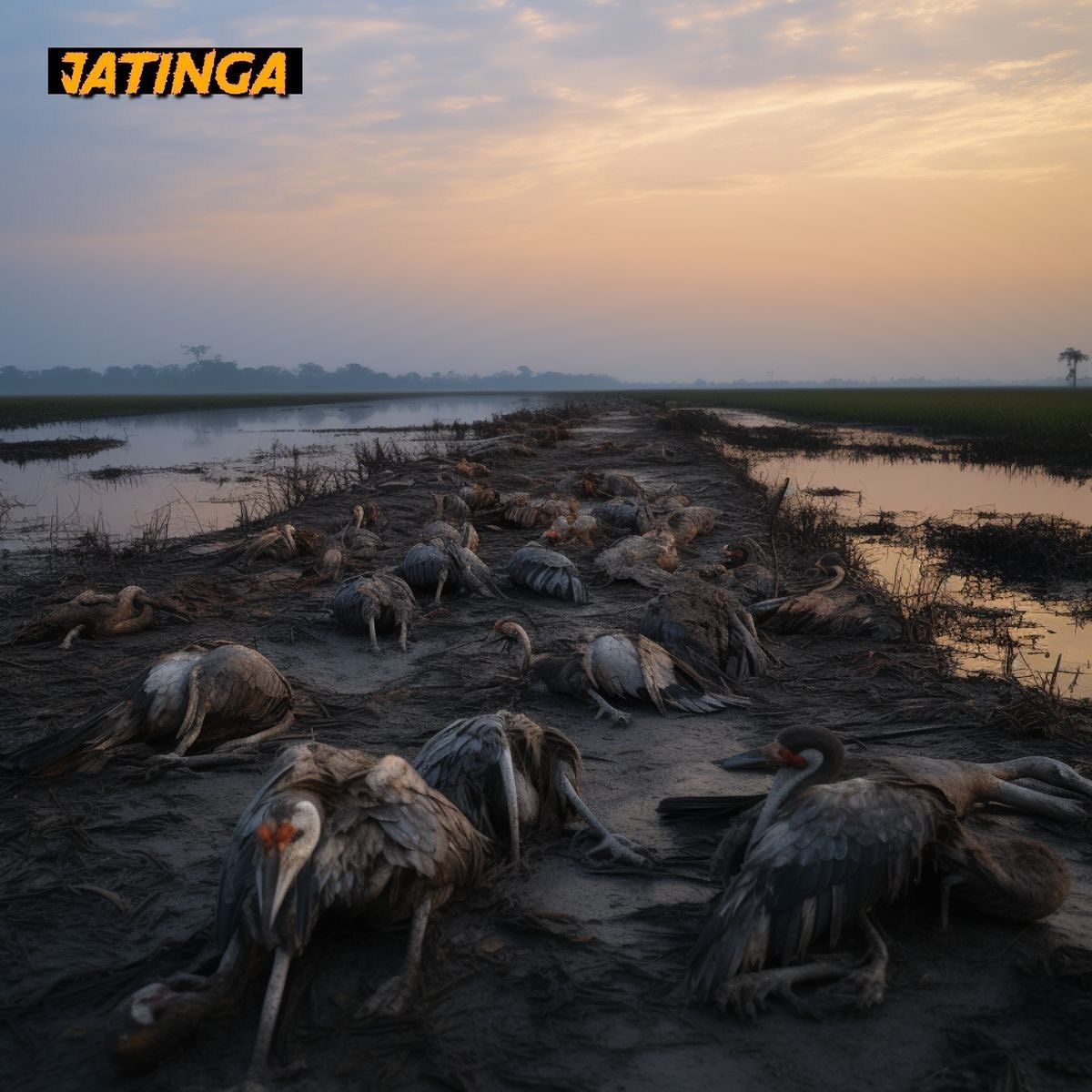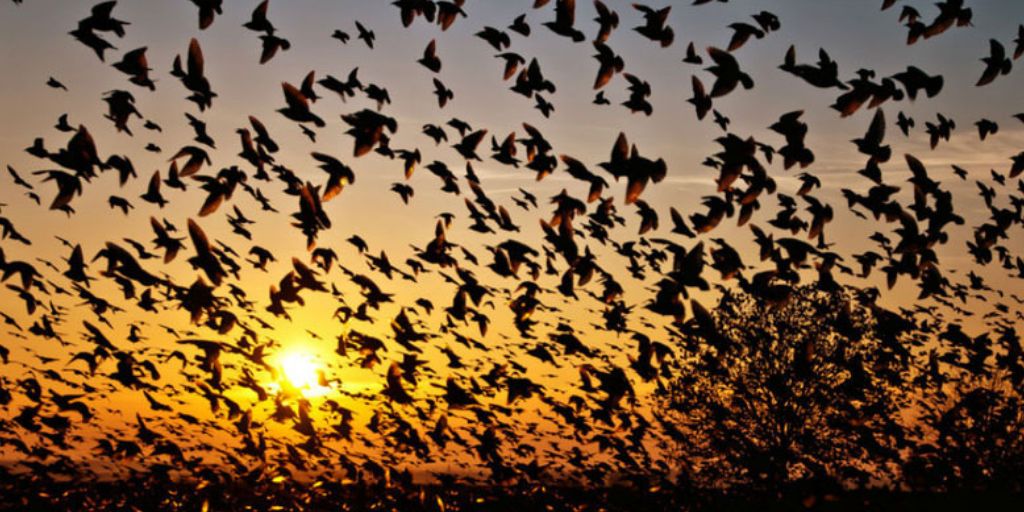Jatinga Bird Mystery: The Suicidal Birds of Assam
Jatinga Bird Mystery
Hidden in the misty hills of Assam lies a quaint ethnic village Jatinga, barely noticeable on the map. But when the monsoon clouds give way to September skies, this small hamlet becomes the epicentre of one of India’s most chilling natural mysteries—the mass bird suicides.
Every year, hundreds of migratory birds dive to their deaths, plummeting from the sky as if drawn by some unseen force. Science is still trying to figure out how to explain this strange phenomenon, despite decades of research. Are the birds really taking their own lives? Or is something more unsettling at play?
Let us unravel the chilling enigma of Jatinga’s suicidal birds—a tale where nature blurs the line between logic and legend.
 The Phenomenon: Birds That Fall to Death
The Phenomenon: Birds That Fall to Death
Jatinga Bird Mystery
In Jatinga village, located in the Dima Hasao district of Assam, birds begin crashing into trees, poles, and buildings between 6 p.m. and 9:30 p.m. on moonless or cloudless nights every year. The affected zone is only about 1.5 km long. Most of the affected birds are migratory, flying from unknown locations. Bizarrely, the deaths happen only in this specific zone, not in nearby areas.
What deepens the mystery is that only a specific set of bird species are affected—around 44 species, including:
-
Tiger Bittern
-
Indian Pitta
-
Kingfishers
-
Heron de pond
-
Black Drongo
-
Green Pigeon
Possible Scientific Explanations
Wind-Related Disorientation
Fog, high-speed winds, and monsoon conditions might disorient migratory birds. The birds may be attracted to artificial lights in the ethnic village Jatinga during low visibility and crash due to confusion. But if this is true, why only Jatinga? Why not other foggy hill regions of India?
Geomagnetic Disturbances
Some speculate that geomagnetic anomalies in Jatinga disrupt bird navigation systems—a theory similar to explanations for whale beachings. However, no strong evidence exists to prove this.
The Light Trap Hypothesis
The disoriented birds might be enticed by locals lighting torches or bamboo fires. Once attracted, the birds were historically caught or killed. Though such ritualistic hunting is now discouraged and artificial lighting is regulated, the phenomenon still continues.
Folklore and Local Beliefs
For centuries, the falling birds were viewed as evil spirits by the Zeme Naga tribe and other indigenous populations. Villagers once fled the area during this season, fearing supernatural punishment. Even today, whispers of these tales remain part of Jatinga’s folklore.
Not All Birds Are Affected
Interestingly, only nocturnal and partially diurnal birds are drawn to their deaths. Migratory birds are disproportionately affected, even though they have never seen Jatinga before.
Historical Records
The phenomenon was first documented in 1905 by a British tea planter. Shocked, he described birds “raining” from the sky on a foggy night.
Since then, Jatinga has attracted researchers, documentaries (BBC, National Geographic), and even paranormal investigators. Yet the mystery remains unsolved.
From Horror to Conservation
In earlier decades, villagers believed these birds were either “gifts from gods” or “evil spirits to be destroyed” and killed hundreds using torches and sticks. Conservation groups have since intervened, spreading awareness and protecting these species.
Today, Jatinga bird watching centre has become a hub for visitors, and the Assam government has included Jatinga in ecotourism and environmental education initiatives.
Unique Traits of the Mystery
-
The bird falls occur only on windless nights.
-
Birds do not return the following year.
-
They appear hypnotized, sometimes hovering low before falling.
-
Birds dive toward light, not away from it.
-
The phenomenon happens only in Jatinga, which lies on a bird migration corridor.
Planning to Visit Jatinga?
-
Location: Dima Hasao district, near Jatinga railway station
-
Best time: September to November, after dusk
-
Tip: Go with a local guide, respect wildlife, and avoid artificial lighting
Many visitors also explore nearby spots like Jatinga Rameshwara temple and check Jatinga weather updates before planning a trip. The Jatinga in Assam map shows its strategic location in the hills, which adds to the mystery.
 No Parallel in the World
No Parallel in the World
While other mass animal behaviours exist—like lemming migrations or whale strandings—no exact parallel of the Jatinga bird phenomenon has ever been documented anywhere else.
Final Thoughts
In the sleepy hills of Jatinga, even the skies whisper secrets—where birds fall not by fate, but by mystery. Some call it science. Some call it superstition. But Jatinga remains an eternal riddle—one that lives on in the clouds, shadows, and wings of the night.
Disclaimer
The Jatinga bird mystery in Assam is famous because many birds die in strange ways at night. Locals and scientists have different theories, but the whole reason is still up for debate. This blog shares the story only for curiosity and awareness. It is not intended to propagate superstition or fear. Readers should treat it as an unsolved natural mystery, not as paranormal activity.



